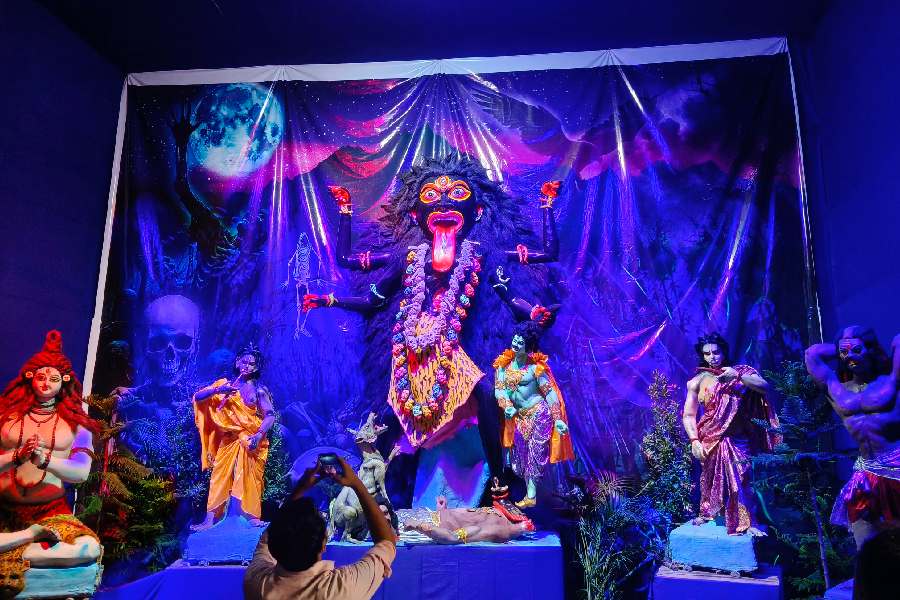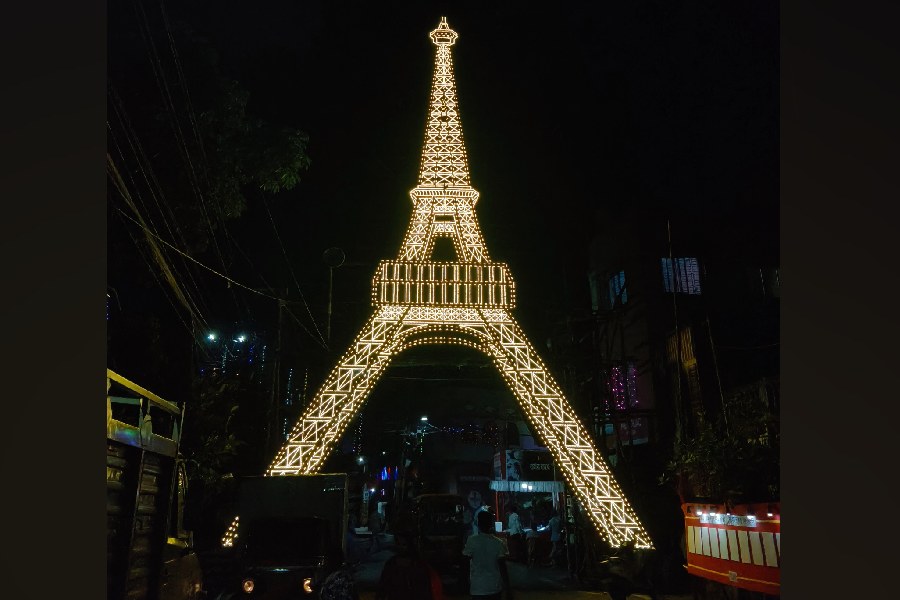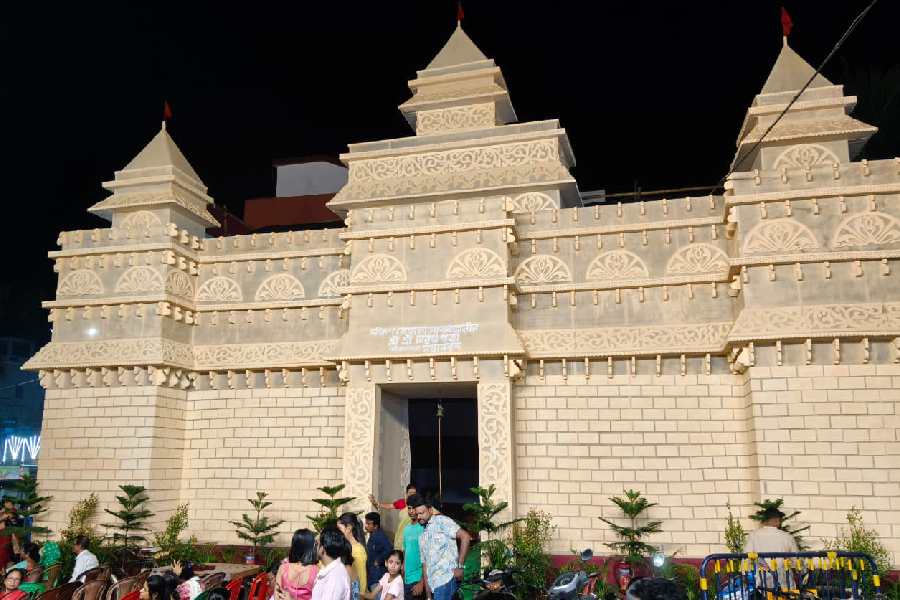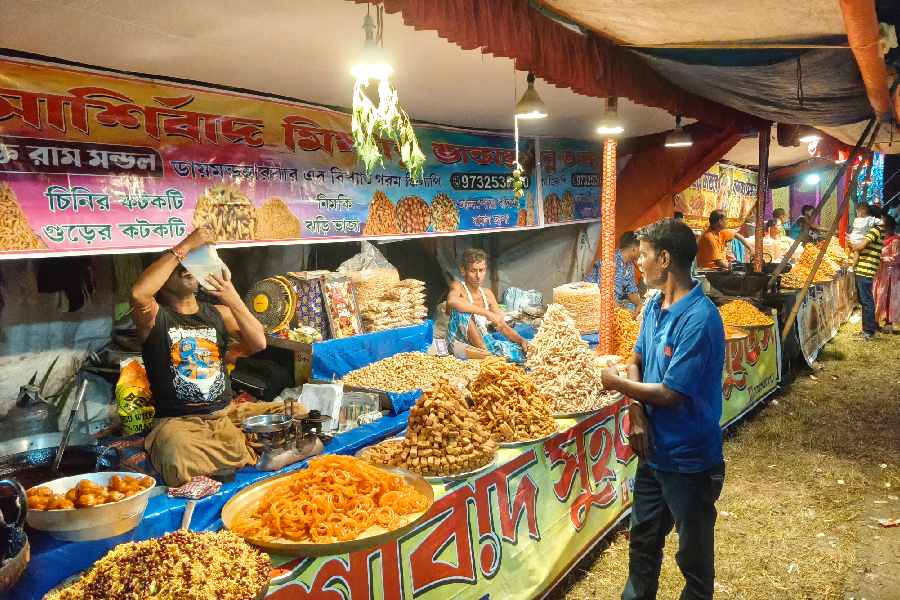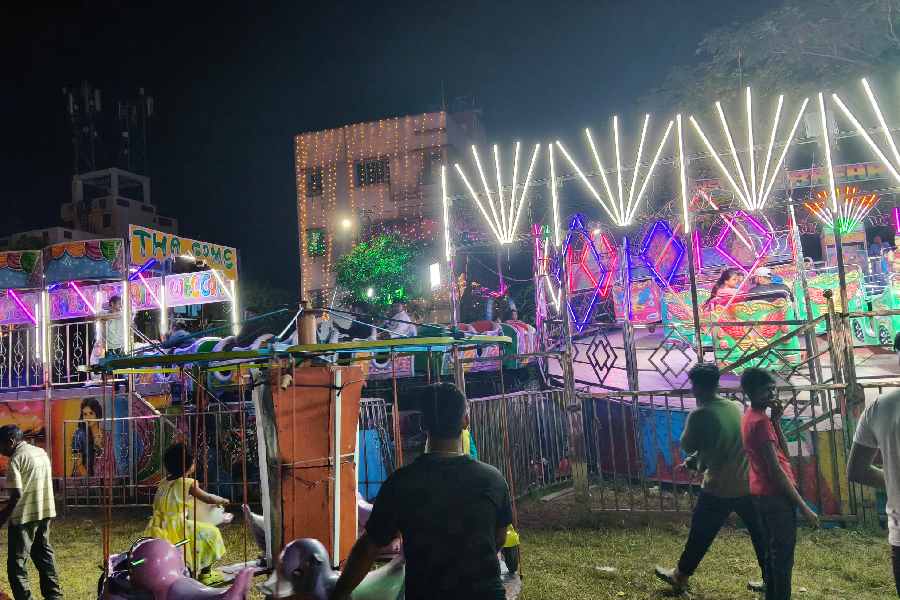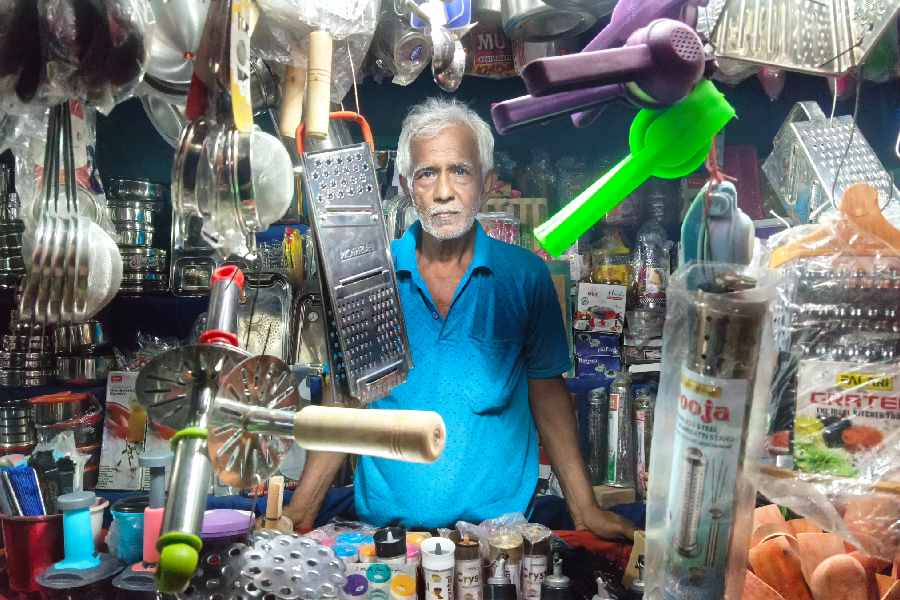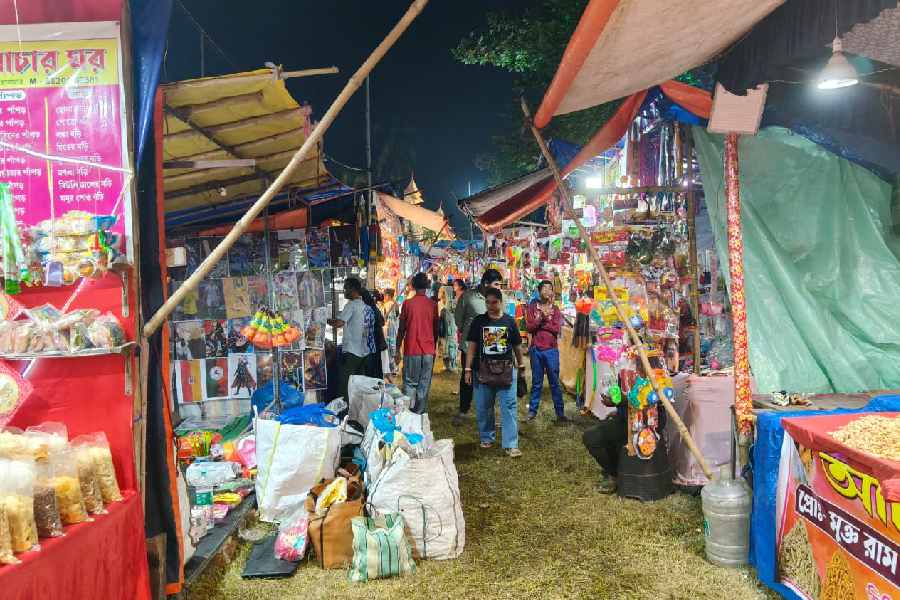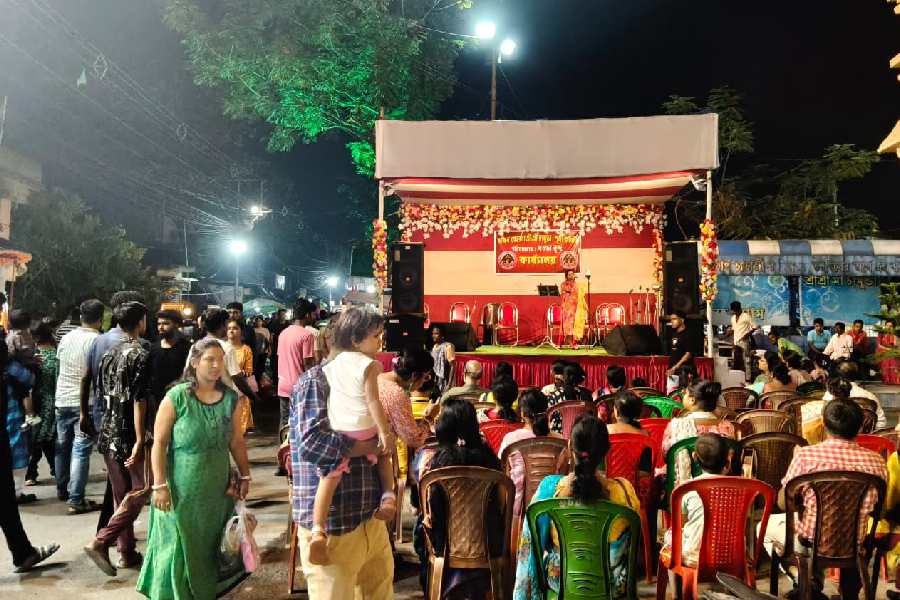While most of Kolkata celebrates Kali Puja, at Sastir More in Behala’s Silpara, the goddess takes on her fierce Chamunda form, a symbol of power, sacrifice, and protection. For 59 years, the people of this neighbourhood have carried forward a tradition that began not with a formal committee, but with a handful of devoted locals determined to create something of their own.
The Chamunda Puja began as a people’s puja, born out of community spirit, faith, and collective effort. As evening descends on Sastir More, the lanes come alive with the scent of incense, the rhythmic beat of dhaaks, and rows of stalls shimmering under fairy lights as Chamunda Maa’s idol glows, fierce yet protective, terrifying yet tender.
For Narayan Karmakar, 75, who has been part of the Puja for 55 years, the story begins long before the Santan Brinda Committee came into being. “Ganesh Dasgupta was the founder of this puja,” he recalls, “and many others joined over time. This puja was started by a few people of the locality and over the years many have joined.”
Goddess Chamunda, one of Durga’s fiercest manifestations, is said to have sprung from her forehead to slay the demons Chanda and Munda, from whom her name originates. Often identified with Kali, she is depicted as skeletal and fearsome, dwelling in cremation grounds and drinking the blood of demons so they cannot rise again.
Every offering made to Maa Chamunda, whether in brass, copper, or small pieces of gold, carries a story. Karmakar meticulously records the names of those who donate, ensuring every devotee’s contribution is remembered.
As we speak, he is interrupted several times by devotees seeking his advice on rituals. With the patience of a priest and the warmth of a neighbour, he answers each one. “Your own mother would want you to eat, so why wouldn’t Maa Chamunda?” he tells a woman who wonders if fasting is necessary. “Maa comes here when the rituals take place,” he adds quietly, as if speaking to himself.
Narayan has grown up with this Puja. “I’ve been part of it for decades,” he says with pride. “As long as I have strength, I’ll continue.”
Over the decades, the idol has been crafted by different artists, once even made right next to the pandal itself. “In the early years, the lighting came from a local shop,” Karmakar recalls. “Now, it comes all the way from Janai in Hooghly.”
The Chamunda Puja mela is as much a part of the celebration as the worship itself. Spread across a large open ground, the week-long fair draws visitors from across Behala and neighbouring areas. The place transforms into a vibrant carnival, with food stalls selling phuchka, egg rolls, mughlai parathas, chowmein, and chicken pakora, alongside sweet counters stacked with jalebi.
Toy stalls, balloon vendors, and shops selling bangles, plastic wares, and steel utensils line the pathways. The air rings with laughter and the hum of machinery from joyrides, the Ferris wheel towering over the fairground, the break dance ride flashing with neon lights. Children tug at their parents’ hands for a turn at the shooting gallery or to buy cotton candy that glows pink in the evening haze.
On the eve of the Puja every year, a drawing competition is organised for children, adding a creative spark to the festivities and giving the young devotees a chance to participate in the celebration.
For Sunil Pal, 68, a vendor from Diamond Harbour, who runs a steel stall, the fair has been part of his life for 25 years. “When I first came, there weren’t so many stalls,” he says with a smile. “Now, the crowd has grown — it feels like a big family gathering.” Business, however, isn’t quite booming. “Compared to other places, the profit here is less and the expenses are higher,” he admits. “But the committee members are kind and treat us well. That’s why I come back every year.” He gestures toward a small group of familiar faces at his stall. “Some of them have been buying from me for years. With them, it’s not about profit — it’s about connection.”
Sankhadeep Paul, 27, who has been seeing this Puja since his birth, reflects on its significance. He says that for him Chamunda Puja feels bigger than Durga Puja as he is closely associated with it.
He recalls, “I was very small, maybe five or six years old. I remember seeing my mother, grandmother and aunt fasting, and I would fast with them, observing rituals from one day to the next."
“Chamunda Maa means ‘Beti’ to me. This puja is for all of us ordinary people. What I feel proud of is that Maa Chamunda has never turned anyone away. Jai Maa Chamunda!” he esclaims.
And that, perhaps, is what keeps Chamunda Puja here alive; a sense of belonging that transcends generations, turning devotion into something deeply human. There are not many places in Kolkata where Chamunda Puja is observed; another famous celebration happens in Chetla, but Silpara’s 59-year-old tradition continues to shine with its unique blend of faith, community, and festivity.
